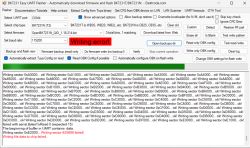Warm welcome.
I have not found a similar question on the forum, so I am asking.
Let's assume the following situation:
I have an air conditioner at home controlled by an ESP8266. I want to make a system that will allow me to turn it off/on from outside the house using a smartphone. Doing this is not a problem if the ESP and the smartphone are on the same network.
Only one idea comes to mind: the ESP scans the database every, say, 5s and checks whether the air conditioning should be switched on or not.
I am sure there is a simpler way.
Please give me some advice or provide helpful links.
Thank you.
I have not found a similar question on the forum, so I am asking.
Let's assume the following situation:
I have an air conditioner at home controlled by an ESP8266. I want to make a system that will allow me to turn it off/on from outside the house using a smartphone. Doing this is not a problem if the ESP and the smartphone are on the same network.
Only one idea comes to mind: the ESP scans the database every, say, 5s and checks whether the air conditioning should be switched on or not.
I am sure there is a simpler way.
Please give me some advice or provide helpful links.
Thank you.





